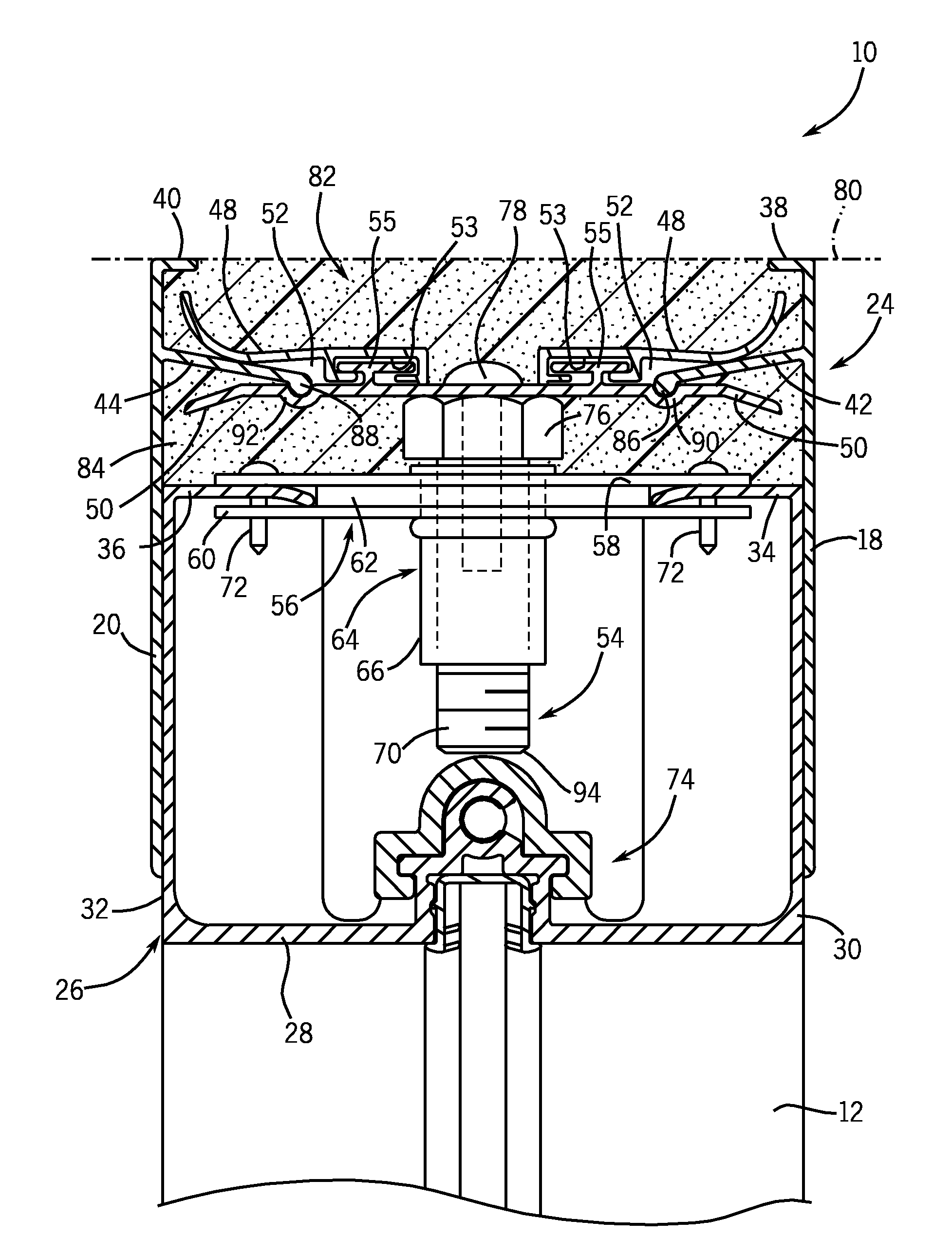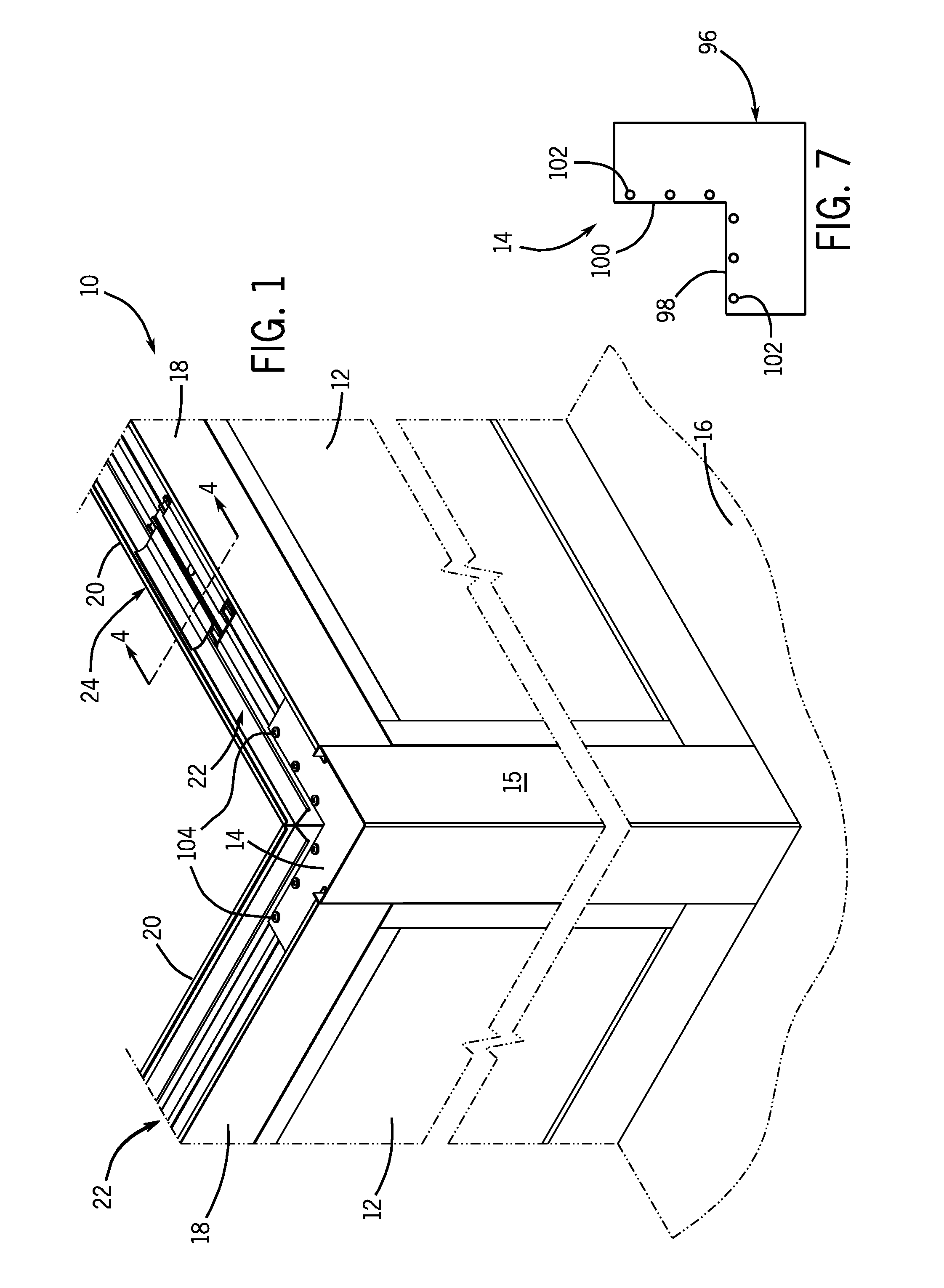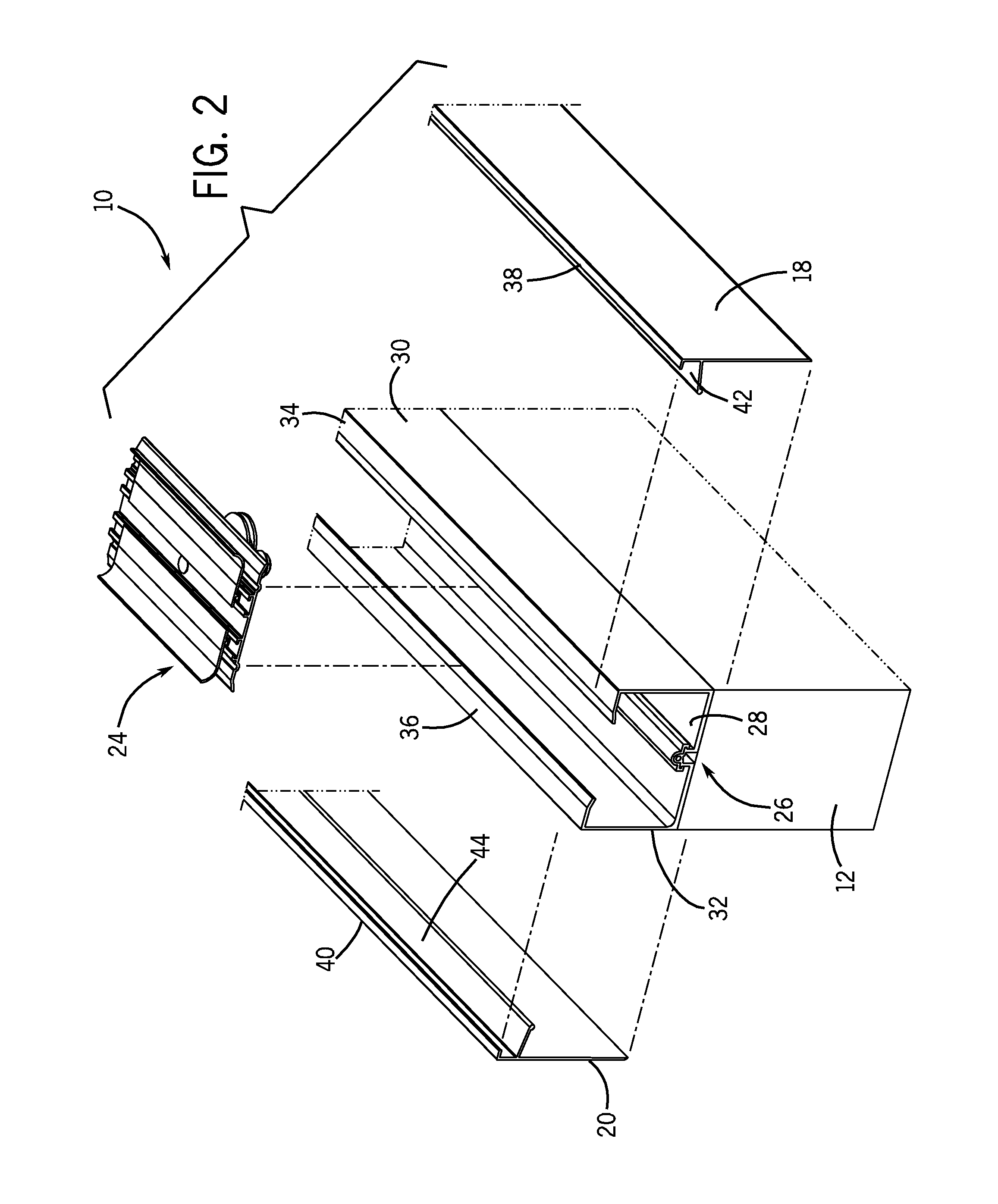Wall-Ceiling Slip Joint Permitting Seismic Induced Movement
a technology of slip joints and wall ceilings, applied in the direction of parkings, walls, shock-proofing, etc., can solve the problems of affecting the stability of the wall system, the seal between the suspending ceiling and the wall panel is susceptible to sound and/or light transference, and the wall system is not designed to be load-bearing
- Summary
- Abstract
- Description
- Claims
- Application Information
AI Technical Summary
Benefits of technology
Problems solved by technology
Method used
Image
Examples
Embodiment Construction
[0019]FIG. 1 shows a portion of a modular wall system 10 composed of a pair of wall panels (or partition walls) 12 connected to one another by a corner brace 14. A corner cover 15 extends from the corner brace 14 and runs the height of the pair of wall panels 12 and assists in connecting the adjacent wall panels 12 to one another. As will be described with respect to FIG. 7, the corner brace 14 allows the joined wall panels to swing as a single structure during seismic events. The wall panels 12 are designed to abut the underside of a suspended ceiling (not shown) via a slip joint connection, which will be explained. As will also be explained in greater detail below, the wall panels 12 are constructed to be shorter than the distance between the suspended ceiling and a floor, shown at 16. The gap between each wall panel 12 and the ceiling is traversed by a pair of wall extensions 18, 20 designed to abut against the underside of the suspended ceiling and be retained thereagainst witho...
PUM
 Login to View More
Login to View More Abstract
Description
Claims
Application Information
 Login to View More
Login to View More - R&D
- Intellectual Property
- Life Sciences
- Materials
- Tech Scout
- Unparalleled Data Quality
- Higher Quality Content
- 60% Fewer Hallucinations
Browse by: Latest US Patents, China's latest patents, Technical Efficacy Thesaurus, Application Domain, Technology Topic, Popular Technical Reports.
© 2025 PatSnap. All rights reserved.Legal|Privacy policy|Modern Slavery Act Transparency Statement|Sitemap|About US| Contact US: help@patsnap.com



